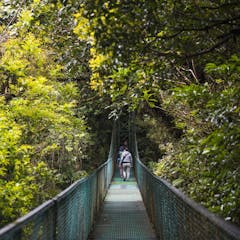
Articles on Endangered species
Displaying 121 - 140 of 462 articles

The paltry spending means many species severely impacted by the megafires were left in desperate trouble, potentially pushing some closer to extinction.

The Soviet Union was a latecomer to industrial whaling, but it slaughtered whales by the thousands once it started and radically under-reported its take to international monitors.

The iconic monarch butterfly has been added to the Red List of endangered species, but hasn’t received protection in the US yet. That’s not necessarily a bad thing.

The so-called post-2020 global biodiversity framework is a nature counterpart to the 2015 Paris Agreement on climate change, and will aim to curb the decline of nature by 2050.

This fictitious project approval helps us better understand how environmental governance in Australia has gone badly wrong.

The simulation showed catching cane toads once a week involved 85% less cost and effort than other strategies, but was just as effective.

Greater gliders are fluffy, cat-sized possums with large ears. State governments have failed them at every turn, and continue to raze their habitat.

From discovering hidden populations of vulnerable newts to dropping “seed bombs”, two new research papers show how genomics and drones help restore threatened ecosystems.

The recent goring of a tourist who approached within 10 feet of a bison in Yellowstone National Park is a reminder that wild animals can be dangerous and people should keep safe distances.

An Indigenous-led effort to increase caribou abundance and cultural practices like hunting is successfully increasing the caribou population

The key to protecting wolverines around the world is to reduce trapping, minimize predator control pressures, and to protect and connect large blocks of intact habitat they need to survive.

We don’t have to passively sit back and watch Australia’s species and ecosystems die. Here are five concrete steps the next government should take.

The goal of our new web app is to help users engage with their elected representatives and put imperilled species on the political agenda this election and beyond.

The fate of nature underpins our economy and health. Yet in the election campaign to date, there’s been a deafening silence about it.

Tourism revenues account for almost 10% of Costa Rica’s gross domestic product. New research shows that charismatic wildlife is necessary but not sufficient to attract ecotourists.

Pollen brings seasonal misery to millions of Americans, but it serves a critical purpose: fertilizing many kinds of plants, including food crops.

Keeping landscapes connected can help protect wild animals and plants. In the US Southwest, border wall construction is closing off corridors that jaguars and other at-risk species use.

Captive breeding of koalas could be done much more cheaply and avoid inbreeding issues if we embrace assisted reproduction.

Many of Africa’s large aquatic animals, such as dolphins, manatees and turtles, are being killed for meat.

Biologists have used ancient DNA, preserved in fossil bones for millennia, to study the evolution of large species, but now they can employ it to study small animals like lizards and frogs.
